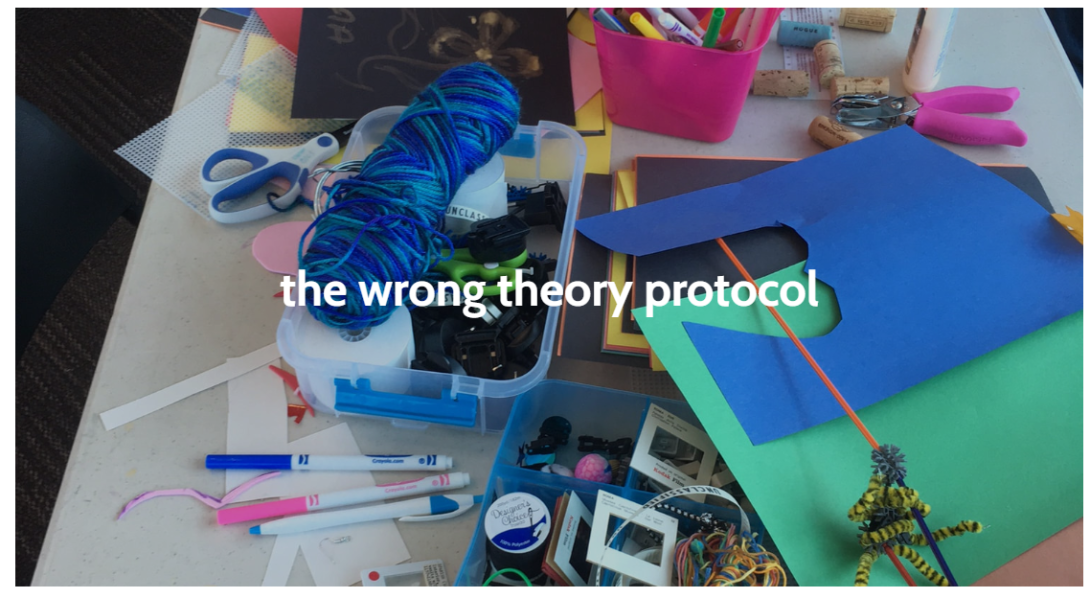Resources included in these libraries were submitted by ITEST projects or STELAR and are relevant to the work of the NSF ITEST Program. PDFs and/or URLs to the original resource are included in the resource description whenever possible. In some cases, full text publications are located behind publishers’ paywalls and a fee or membership to the third party site may be required for access. Permission for use must be requested through the publisher or author listed in each entry.
CAREER: FRAMING AND REFRAMING AGENCY IN MAKING AND ENGINEERING (FRAME)
Instruments
What is the wrong theory protocol? The goal of this protocol is to support learners to take risks and understand the problem they are designing for. In this protocol, designers first briefly describe the design problem they are working on, then name the needs, constraints and requirements they identified. They are then asked to come up with the worst possible design, one that violates constraints and does not address needs, prior to generating good ideas.
Indigenous Mapping: Culturally Relevant, Technology-Enhanced Teaching Strategies for Indigenous Learners and the Public Good
InstrumentsAn instrument for teachers to develop formative assessment.
Student Experience Exit Ticket (SEET)
InstrumentsStudent Exit TicketThrough this survey we are trying to understand how you feel about 3D printing and 3D modeling
The Situational Motivation Scale (SIMS)
InstrumentsOn the Assessment of Situational Intrinsic and Extrinsic Motivation: The Situational Motivation Scale (SIMS)The purpose of the present research was to develop and validate a situational (or state) measure of motivation, the Situational Motivation Scale (SIMS). The SIMS is designed to assess the constructs of intrinsic motivation, identified regulation, external regulation, and amotivation (E. L. Deci & R. M. Ryan, 1985, 1991) in field and laboratory settings. Five studies were conducted to develop and vali- date the SIMS. Overall, results show that the SIMS is composed of 4 internally
GIS and Spatial Thinking Skills Assessment
InstrumentsYou are working with the Chicago Early Learning Program on an initiative to bring free Pre- Kindergarten programs to every child in Chicago by 2021. The Early Learning Program currently has funding to add one more free Pre-K program in Chicago and you are in charge of determining the best location. To help you decide where to put the new program, you have data and a map that provide information about the current locations of free Pre-K programs in Chicago. Look at the data and map that follow then write your responses on the next page. Be as specific as possible and make sure to use evidence
DAILy AI Concept Inventory - questions related to artificial intelligence
InstrumentsIn this survey you will be asked to answer a series of questions related to artificial intelligence (AI). The purpose of these questions is to capture your pre-existing ideas about AI and AI concept knowledge before you start the Everyday AI program. So it’s totally OK if you are unsure of a lot of your answers - Just make your best guesses! We will not grade your answers. This survey data will be used to help us figure out what you have learned through this program (between the start and end of the program) so that we can make the program better!For for information, please contact Irene Lee
The Development of the STEM Career Interest Survey (STEM-CIS)
InstrumentsInternationally, efforts to increase student interest in science, technology, engi- neering, and mathematics (STEM) careers have been on the rise. It is often the goal of such efforts that increased interest in STEM careers should stimulate economic growth and enhance innovation. Scientific and educational organizations recommend that efforts to interest students in STEM majors and careers begin at the middle school level, a time when students are developing their own interests and recognizing their academic strengths. These factors have led scholars to call for instruments that effectively
Listening to Waves
InstrumentsThe sound-exploration tools allow you to create music as you playfully explore the science of sound. Click on the images below to open them. You can watch these tutorials to learn how to use them.
The development and validation of the goal orientation and learning strategies survey (goals-s)
InstrumentsThis article outlines the construction and validation of the Goal Orientation and Learning Strategies Survey (GOALS-S). This 84-item survey was designed to measure students’ motivational goal orientations and their cognitive and metacognitive strategies. Results of first-order confirmatory factor analyses (CFAs) supported the factorial validity of the GOALS-S scales measuring students’ goals and strategies (with goodness-of-fit indices in post-hoc models ranging from .908 to .981). In addition, higher order CFAs (HCFAs) support hierarchical structure of the GOALS-S scales (with goodness-of-fit
Student’s Spatial Learning Attitudes (SLA)
InstrumentsThe Student’s Spatial Learning Attitudes (SLA) instrument is valid and reliable instrument designed for secondary students to share their ideas about spatial learning that involves using maps and technologies (e.g., mobile devices and computers that use map-based imagery) for learning. The instrument underwent a validation process with experts in the STEM education and the geospatial technology teaching and learning field. Further, to ensure that the items were comprehensible for English language learners, the items were reviewed by an educator with expertise with teaching English learners